Overview
This article delineates five essential steps for the successful implementation of utility management software. These steps encompass:
- Conducting a comprehensive needs assessment
- Establishing clear implementation objectives
- Engaging key stakeholders
- Planning for effective data integration
- Delivering comprehensive user training
Each step is bolstered by practical strategies and examples, underscoring the critical role of stakeholder involvement, clear goal-setting, and ongoing support. Such elements are vital to ensure a smooth transition and maximize the software’s effectiveness in enhancing operational efficiency.
Introduction
Implementing utility management software stands as a transformative step for organizations aiming to enhance efficiency and streamline operations. Yet, the path to successful deployment is often riddled with challenges, from aligning stakeholder expectations to ensuring seamless data integration. This article serves as a comprehensive guide, outlining five essential steps that organizations can undertake to navigate the complexities of implementation effectively.
How can businesses guarantee that their software deployment not only addresses immediate needs but also aligns with long-term strategic goals?
Conduct a Comprehensive Needs Assessment
-
Identify Stakeholders: Engage with various departments, including finance, operations, and IT, to gather comprehensive input. This method guarantees a thorough understanding of the requirements throughout the organization, essential for successful software deployment. Effective involvement of stakeholders can lead to improved decision-making and risk management, aligning project objectives with the expectations of those involved. Involving stakeholders early nurtures trust and cooperation, ultimately resulting in enhanced project outcomes and a supportive atmosphere for execution. With 10X ERP’s all-inclusive support, stakeholders can be confident that their input will be valued throughout the process.
-
Analyze Current Processes: Conduct a thorough review of existing workflows to pinpoint inefficiencies or gaps that the new software must address. For instance, a U.S. manufacturer successfully managed over 9 TB of information by consolidating multiple systems, demonstrating the significant impact of process analysis on operational efficiency. Additionally, Holiday Inn Club Vacations combined information from seven main systems into a cloud-based platform, showcasing how process analysis can enhance operational effectiveness. 10X ERP’s cloud-based solution ensures real-time data processing and inventory management, facilitating the identification and rectification of inefficiencies.
-
Define Requirements: Create a comprehensive list of essential features and functionalities based on input from stakeholders and process analysis. This list serves as a guiding framework for selecting the most suitable software, ensuring that the chosen solution meets the organization’s specific needs. With 10X ERP’s extensive built-in features, including best-in-class accounting and vendor management, organizations can effectively streamline their requirements without needing to identify additional modules.
-
Prioritize Needs: Rank the identified requirements according to their urgency and potential impact on operations. This prioritization helps concentrate resources on the most vital areas during execution, enhancing the overall effectiveness of the project. The transparent pricing structure of 10X ERP allows organizations to allocate their budget efficiently, ensuring that high-priority needs are addressed first.
-
Document Findings: Compile the results of the needs assessment into a comprehensive report that outlines the identified needs and expectations. This document serves as a reference during the implementation process, ensuring that all parties remain aligned and informed. With 10X ERP’s dedication to ongoing product enhancements and exceptional customer support, participants can trust that their recorded requirements will be fulfilled throughout their ERP journey.
Including contributions from stakeholders is not only advantageous; it is crucial for the success of utility management software projects. However, it is important to be aware of potential challenges, such as scope creep and conflicting inputs, that can arise from frequent stakeholder engagement.
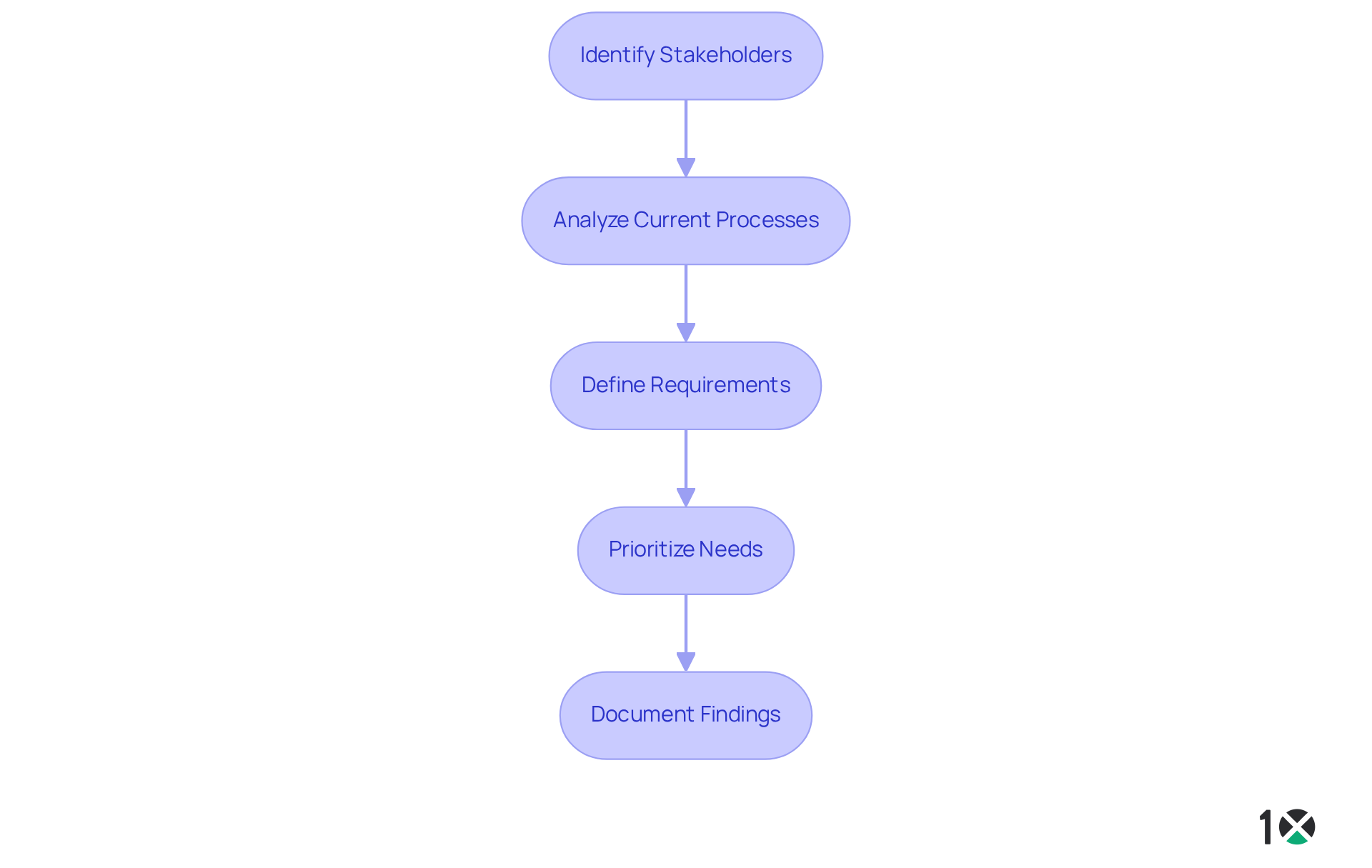
Establish Clear Implementation Objectives
-
Define SMART Goals: Establish objectives that are Specific, Measurable, Achievable, Relevant, and Time-bound. For instance, aim to reduce billing mistakes by 20% within six months of implementation. This clarity not only sets a definitive target but also facilitates effective progress tracking.
-
Align Objectives with Business Goals: Ensure that the execution objectives support broader organizational aims, such as enhancing customer satisfaction or boosting operational efficiency. This alignment is crucial, as it guarantees that the utility management software execution directly contributes to the company’s strategic vision.
-
Communicate Objectives: Share the defined objectives with all involved parties to ensure a comprehensive understanding of the goals and individual roles in achieving them. Effective communication fosters a collaborative environment and enhances accountability among team members.
-
Create a Timeline: Develop a timeline that outlines key milestones and deadlines for reaching each objective. This organized approach helps maintain momentum and keeps the project on track, allowing for timely adjustments as necessary.
-
Review and Adjust: Regularly revisit the objectives throughout the execution process to ensure they remain relevant. Adjust them as needed based on feedback and changing circumstances, emphasizing the importance of flexibility in achieving successful outcomes. At 10X ERP, we are dedicated to continuous improvement, ensuring our solutions evolve based on user feedback. Our comprehensive pricing structure, which encompasses all functionality and features, supports predictable budgeting and planning, further enhancing alignment with business goals.
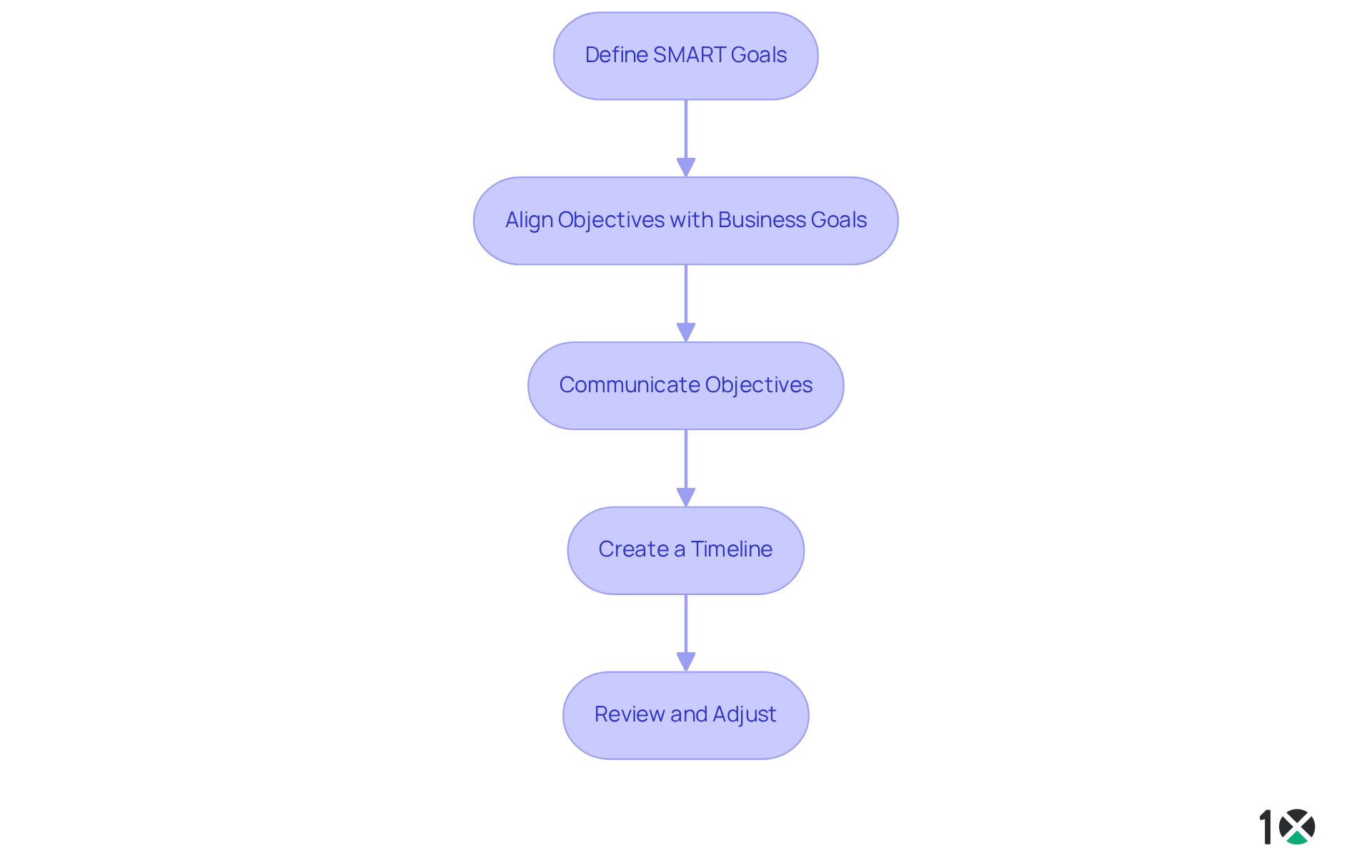
Engage Key Stakeholders in the Process
-
Identify Key Participants: Recognizing key participants is crucial for effective software execution. This includes end-users, department heads, and IT staff who will be directly impacted by the new system. Engaging these individuals early ensures their needs and concerns are addressed from the outset.
-
Conduct Participant Meetings: Organizing regular participant meetings is essential for discussing the implementation process, gathering feedback, and addressing any concerns. These meetings foster trust and transparency, which are crucial for project success. Research suggests that projects with active participant engagement are 30% more likely to succeed, emphasizing the significance of these interactions. Additionally, projects lacking a focus on participant engagement succeed only 32% of the time, highlighting the crucial nature of these meetings.
-
Create a Participant Engagement Plan: Developing a comprehensive participant engagement plan is critical. This plan should specify how and when participants will be engaged throughout the implementation process, including scheduled updates and feedback sessions. Effective planning can significantly enhance project alignment with business objectives, as 44% of projects fail due to misalignment.
-
Encourage Participation: Fostering a setting where participants feel at ease expressing their ideas and recommendations can result in valuable insights and enhancements. Engaged participants contribute to a 40% greater chance of finishing projects on schedule and within budget, highlighting the necessity for their active involvement.
-
Acknowledge Contributions: Recognizing and appreciating participant input is essential for maintaining engagement and motivation throughout the project. Acknowledgment not only reinforces their value but also encourages ongoing participation, which is crucial for the success of the software implementation. Companies that effectively engage stakeholders often see a 20% increase in profits, demonstrating the tangible benefits of such strategies.
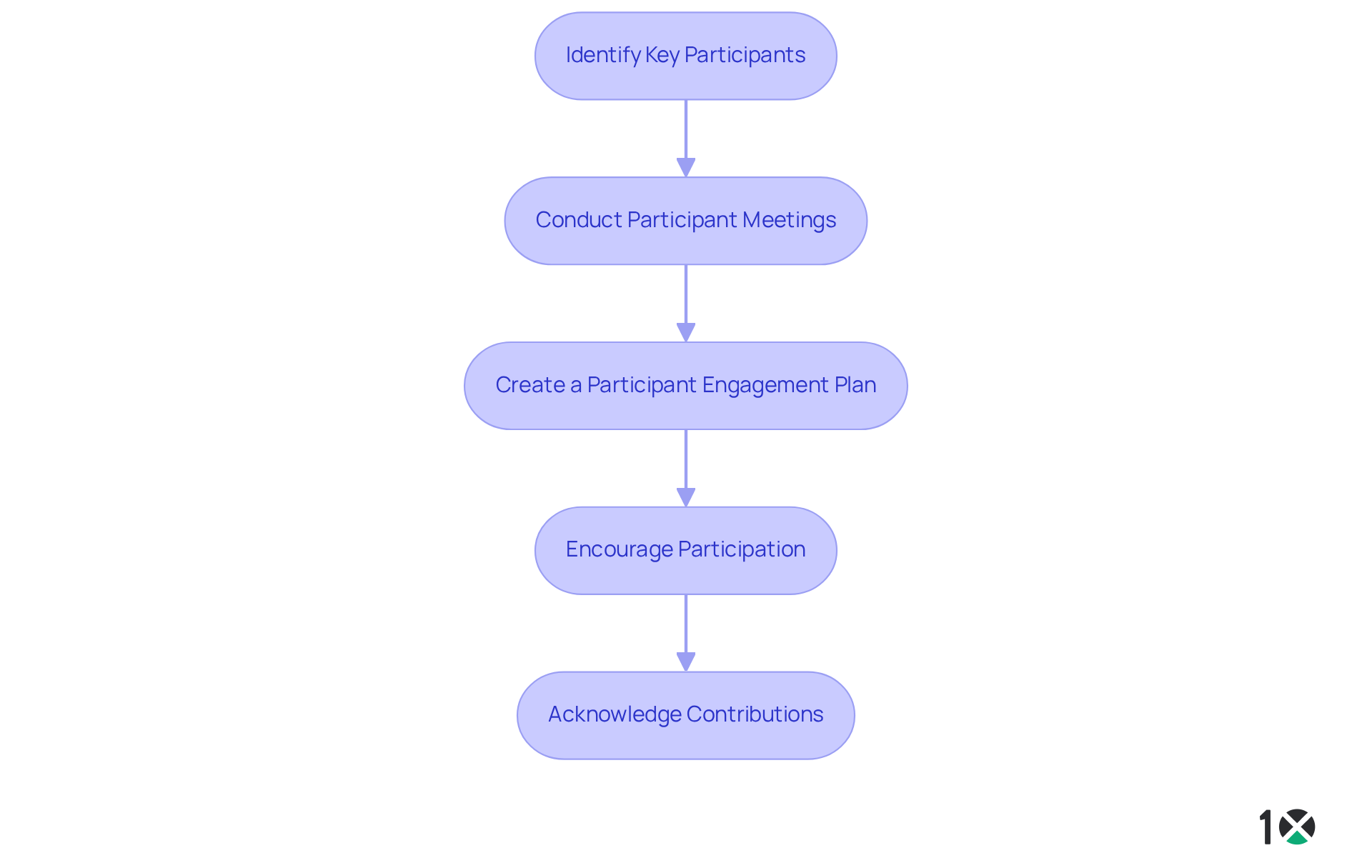
Plan for Effective Data Integration
-
Evaluate Existing Information Sources: Begin by identifying all current information sources that must be integrated with the new software. This encompasses databases, spreadsheets, and third-party applications. Conducting a thorough inventory of these sources is crucial, as 65% of businesses encounter challenges in accessing their ERP information, often due to integration complexities. With 10X ERP’s seamless API integrations and transparent pricing structure, this step ensures that all pertinent information is accounted for and effectively integrated into the new system.
-
Define Information Mapping: Develop an information mapping document that details how information from existing systems will align with fields in the new software. This process guarantees compatibility and facilitates smoother transitions. Effective mapping examples underscore the importance of clear correspondence between legacy systems and new platforms, which can significantly reduce implementation time. Industry specialists emphasize that efficient information mapping is vital for minimizing errors during integration, particularly with 10X ERP’s comprehensive features designed for distributors.
-
Choose Integration Tools: Select suitable tools and technologies for information integration, such as APIs or middleware. These tools are essential for enabling smooth information transfer, addressing the 51% of businesses that report integration challenges as a barrier to effective information utilization. 10X ERP’s robust integration capabilities can streamline the integration process and enhance overall efficiency.
-
Develop a Migration Strategy: Formulate a detailed plan for transferring information from legacy systems to the new software. This strategy should encompass timelines, responsibilities, and testing procedures. Notably, 38% of organizations attribute budget overruns to underestimated staffing needs during migration, highlighting the necessity of thorough planning. A well-structured migration plan can help avert common pitfalls and ensure a smoother transition, particularly with the support provided by 10X ERP throughout the implementation process and its commitment to a lifetime partnership.
-
Test Integration: Execute comprehensive testing of the information integration process to identify and rectify any issues before going live. This step is critical to ensure that data flows correctly and accurately, as 85% of companies report that successful ERP projects are linked to effective testing and preparation. Testing not only aids in identifying potential problems but also fosters confidence in the new system’s reliability, especially with 10X ERP’s commitment to continuous product improvements.
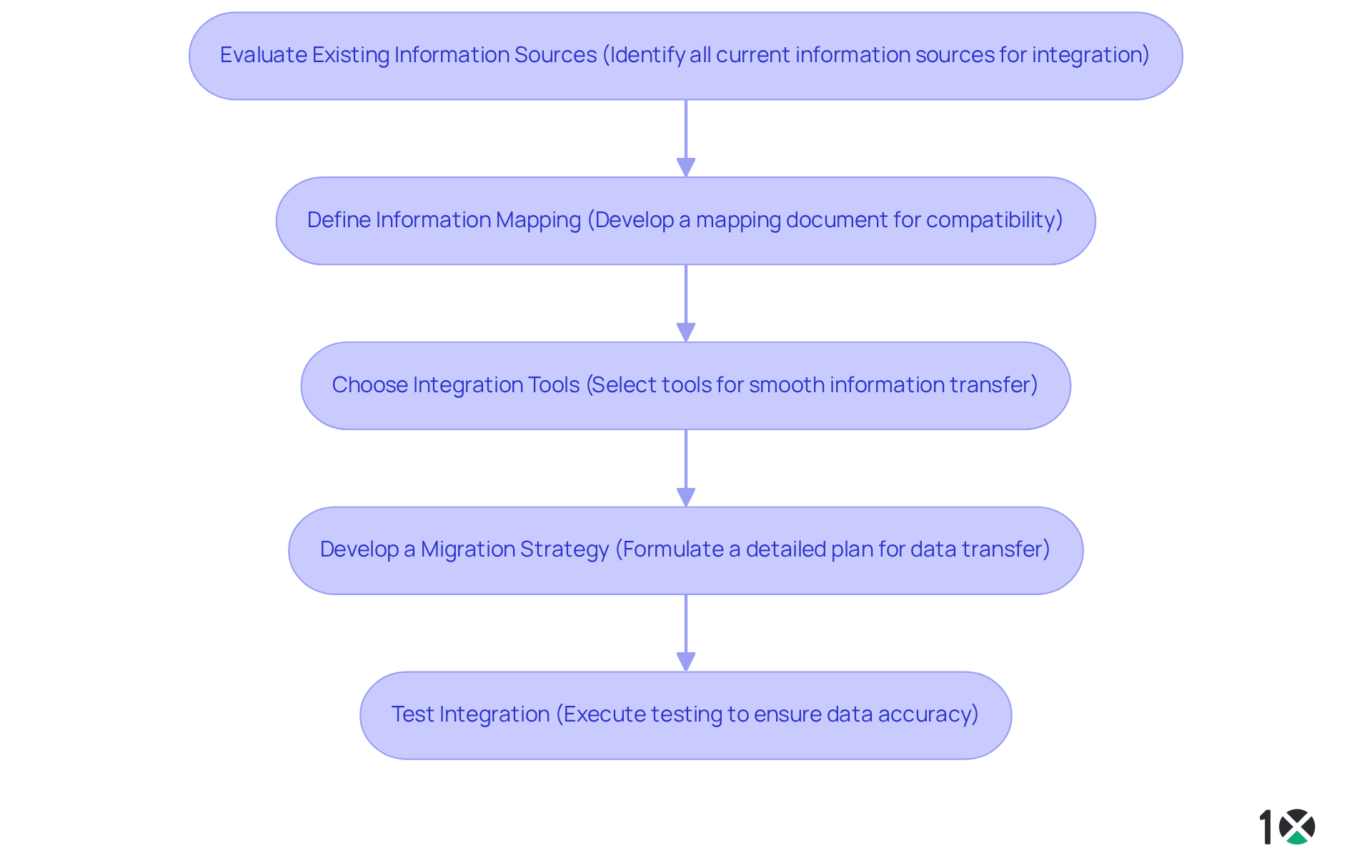
Deliver Comprehensive User Training
-
Assess Training Needs: Begin by identifying the specific training requirements for various user groups based on their roles and the functionalities they will utilize. This tailored approach ensures that each group receives relevant training aligned with their responsibilities, ultimately enhancing operational efficiency.
-
Develop a Training Program: Create a structured training program that incorporates diverse formats such as workshops, online tutorials, and hands-on sessions. This variety caters to different learning styles, enhancing engagement and knowledge retention. Furthermore, 10X ERP offers in-app video guides created by the developers, allowing users to easily access training materials without leaving the application, thus supporting diverse learning preferences effectively.
-
Utilize Real-World Scenarios: Integrate practical examples and scenarios that users are likely to encounter in their daily tasks. This contextual learning approach not only enhances understanding but also improves retention by making the training relatable and applicable to real-life situations.
-
Provide Ongoing Support: Establish a robust support system for users after training. This should include access to resources, FAQs, and a helpdesk to address any questions or issues that arise, ensuring users feel supported as they apply their new skills. With 10X ERP’s in-app support and video guides, users can find answers to their questions quickly and efficiently, reinforcing their learning and confidence in using the system.
-
Gather Feedback: After each training session, collect feedback from participants to identify areas for improvement. This iterative process allows for adjustments to the training program, ensuring it remains effective and relevant to user needs, ultimately fostering a culture of continuous improvement.
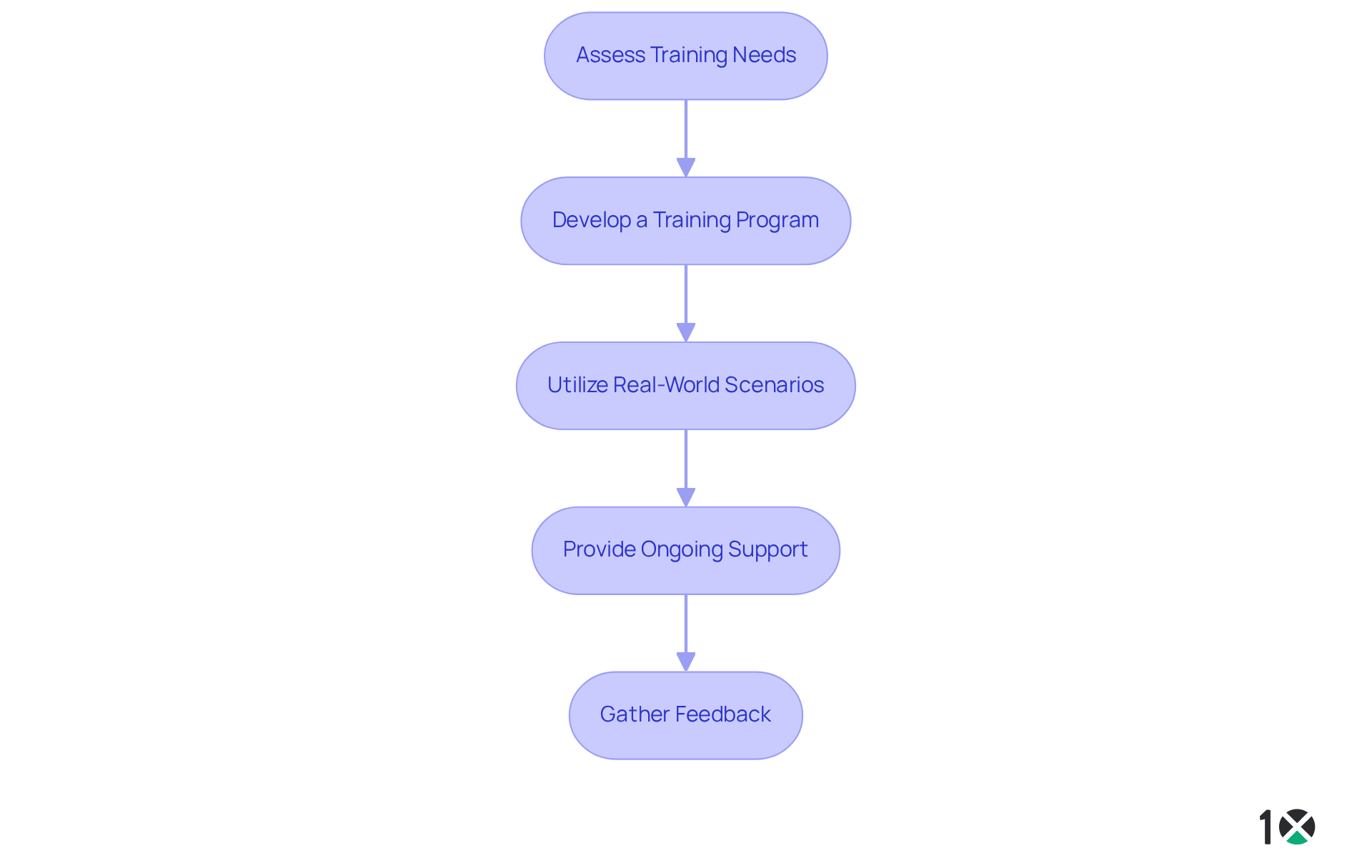
Conclusion
Successfully implementing utility management software necessitates a strategic approach that encompasses several critical steps. Conducting a thorough needs assessment, establishing clear implementation objectives, engaging key stakeholders, planning for effective data integration, and delivering comprehensive user training are essential to ensuring that software deployment aligns with operational goals and meets the needs of all involved parties.
Each step is vital to the overall success of the implementation process. Identifying stakeholders and analyzing current processes allows for a comprehensive understanding of organizational needs. Setting SMART goals and aligning them with business objectives provides a clear direction for the project. Engaging participants fosters collaboration and transparency, while effective data integration minimizes disruptions during the transition. Lastly, robust user training equips all users to utilize the new system efficiently, promoting long-term success.
Ultimately, the successful implementation of utility management software hinges on a well-structured approach that prioritizes communication, stakeholder engagement, and continuous improvement. Organizations are encouraged to embrace these best practices, as they not only enhance the likelihood of a successful rollout but also contribute to improved operational efficiency and stakeholder satisfaction. By taking these steps, utility management processes can be transformed, driving significant benefits for the organization as a whole.
Frequently Asked Questions
What is the purpose of conducting a comprehensive needs assessment?
The purpose of conducting a comprehensive needs assessment is to gather input from various stakeholders across departments to ensure a thorough understanding of the organization’s requirements for successful software deployment.
Who should be involved in the needs assessment process?
Stakeholders from various departments, including finance, operations, and IT, should be engaged to gather comprehensive input and align project objectives with the expectations of those involved.
How can analyzing current processes benefit the organization?
Analyzing current processes helps identify inefficiencies or gaps that the new software must address, leading to improved operational efficiency and effectiveness.
What should be included in the list of requirements for the new software?
The list of requirements should include essential features and functionalities based on stakeholder input and process analysis, serving as a guiding framework for selecting the most suitable software.
Why is it important to prioritize needs during the assessment?
Prioritizing needs helps concentrate resources on the most vital areas during execution, enhancing the overall effectiveness of the project by addressing high-priority requirements first.
What role does documentation play in the needs assessment process?
Documenting findings in a comprehensive report ensures that all parties remain aligned and informed throughout the implementation process, serving as a reference for recorded needs and expectations.
What challenges might arise from frequent stakeholder engagement?
Potential challenges include scope creep and conflicting inputs, which can complicate the needs assessment and implementation process.
What are SMART goals, and why are they important?
SMART goals are objectives that are Specific, Measurable, Achievable, Relevant, and Time-bound. They are important because they set clear targets and facilitate effective progress tracking.
How should implementation objectives align with business goals?
Implementation objectives should support broader organizational aims, such as enhancing customer satisfaction or boosting operational efficiency, ensuring that the software execution contributes to the company’s strategic vision.
Why is communication of objectives crucial during implementation?
Communicating objectives to all involved parties fosters a collaborative environment, enhances accountability, and ensures a comprehensive understanding of goals and individual roles.
What is the significance of creating a timeline for implementation?
Creating a timeline outlines key milestones and deadlines, helping maintain momentum and keeping the project on track for timely adjustments as necessary.
How can objectives be adjusted during the execution process?
Objectives should be regularly reviewed and adjusted based on feedback and changing circumstances, emphasizing flexibility to achieve successful outcomes.
